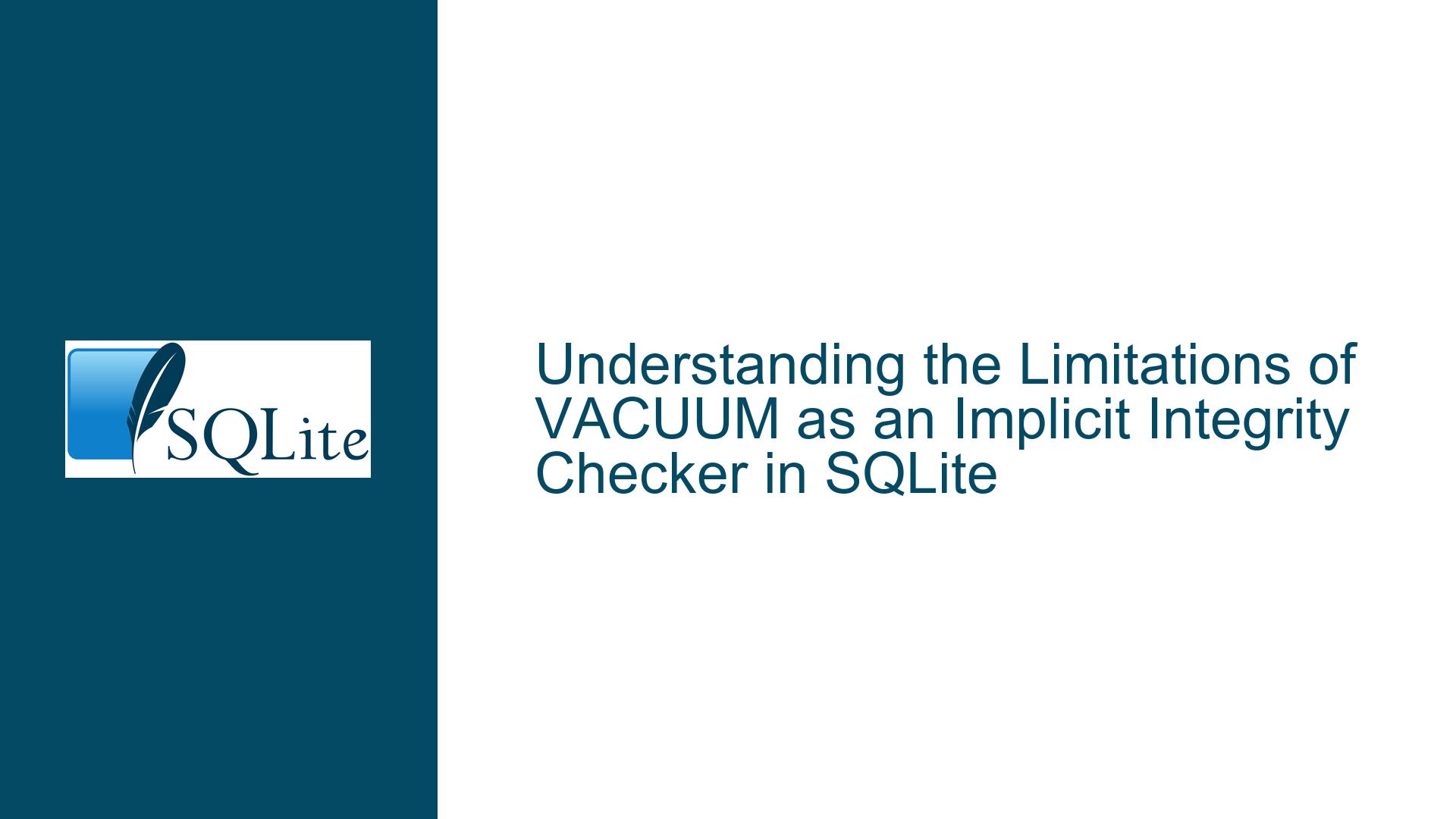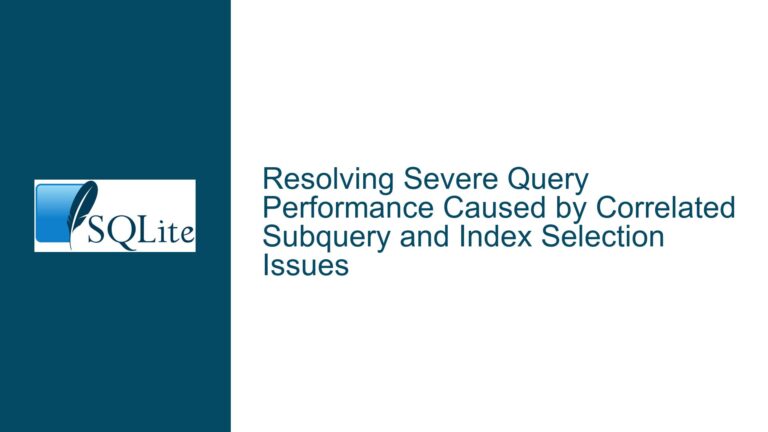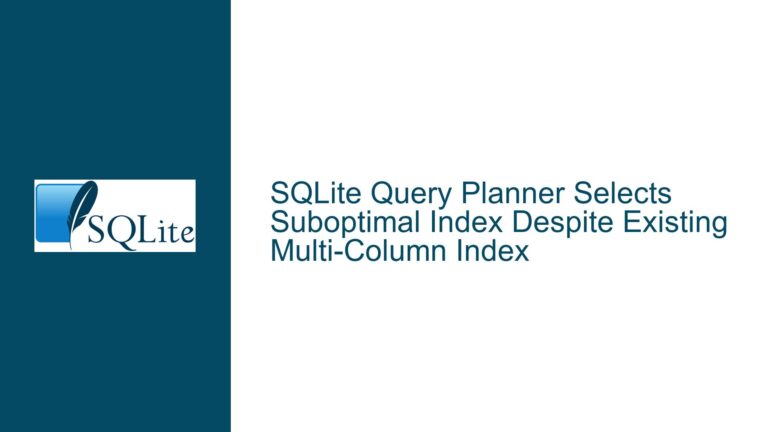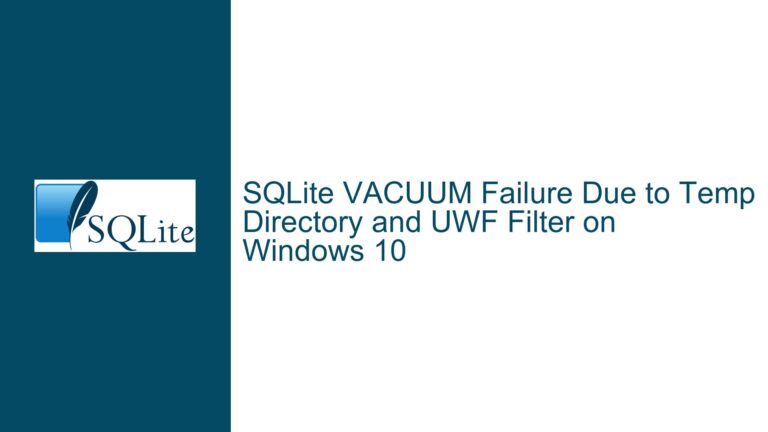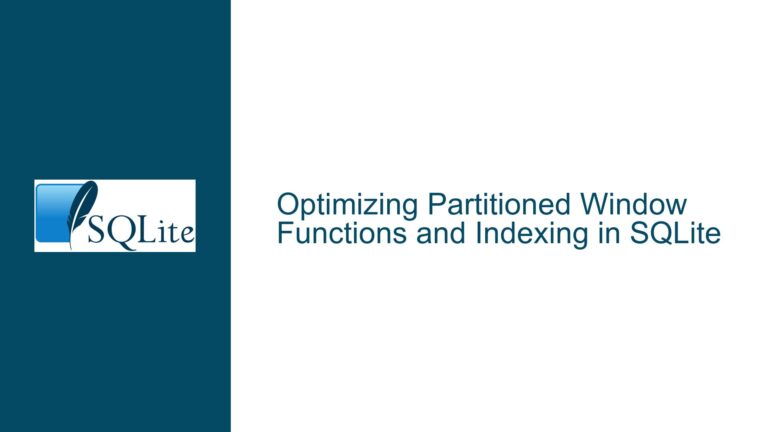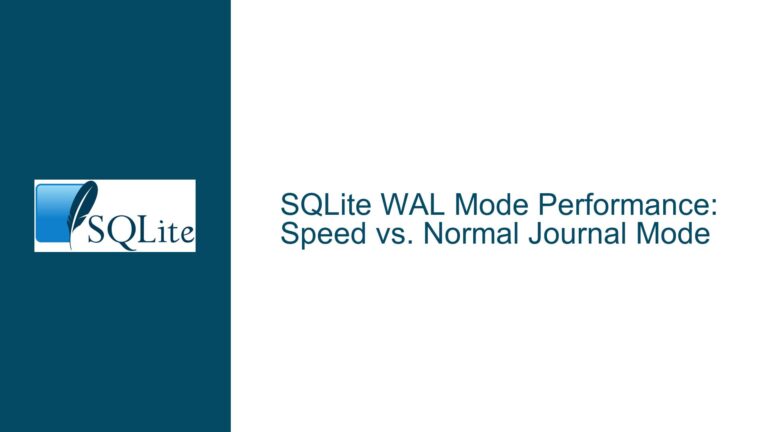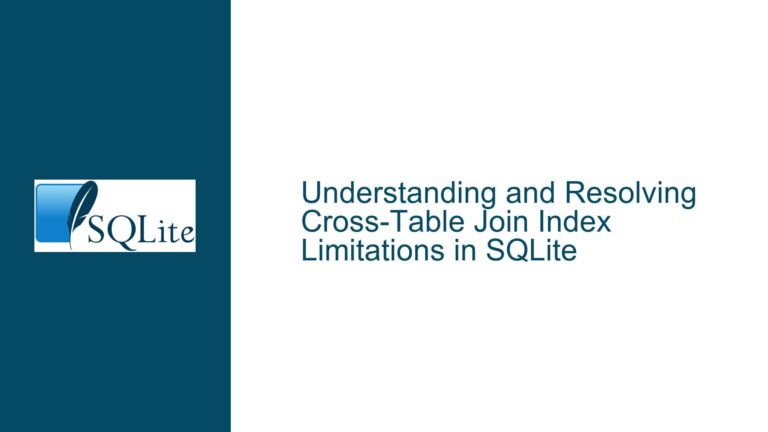the Limitations of VACUUM as an Implicit Integrity Checker in SQLite
The Role of VACUUM in SQLite Database Integrity Verification
SQLite’s VACUUM command is a powerful tool for optimizing database performance and reclaiming unused space. However, its role in database integrity verification is often misunderstood. While VACUUM does perform some implicit checks on the database structure, it is not a comprehensive integrity verification tool. The primary purpose of VACUUM is to rebuild the database file, which involves copying all live data to a new file and discarding any unused or deleted data. This process inherently involves reading and writing all rows, which can reveal certain types of corruption or inconsistencies. However, VACUUM does not perform the same level of detailed checks as the PRAGMA integrity_check or PRAGMA quick_check commands.
The VACUUM command operates at a low level, copying entire rows from the old database file to the new one without attempting to parse or validate the contents of each row. This means that while VACUUM can detect issues such as missing or corrupted pages, it may not catch more subtle forms of corruption, such as malformed rows or out-of-order records. In contrast, PRAGMA integrity_check and PRAGMA quick_check are specifically designed to validate the logical consistency of the database, including the structure of individual rows and the relationships between tables and indexes.
Understanding the limitations of VACUUM as an implicit integrity checker is crucial for database administrators and developers who rely on it for both performance optimization and data integrity. While VACUUM can provide some level of assurance, it should not be used as a substitute for dedicated integrity checking tools. Instead, it should be used in conjunction with these tools to ensure the highest level of database reliability and consistency.
The Specific Integrity Checks Performed by PRAGMA integrity_check and PRAGMA quick_check
The PRAGMA integrity_check and PRAGMA quick_check commands in SQLite are designed to perform a series of detailed checks on the database to ensure its logical consistency. These checks go beyond the basic validation performed by VACUUM and are essential for identifying and resolving potential issues that could lead to data corruption or loss.
PRAGMA integrity_check performs a comprehensive examination of the database, including verifying the integrity of all tables, indexes, and their relationships. It checks for issues such as missing or corrupted pages, invalid row formats, and out-of-order records. Additionally, it validates the consistency of the database schema, ensuring that all tables and indexes are correctly defined and that there are no orphaned or dangling references.
PRAGMA quick_check, on the other hand, is a faster but less thorough version of PRAGMA integrity_check. It performs a subset of the checks done by PRAGMA integrity_check, focusing on the most critical aspects of database integrity. While it may not catch every possible issue, it is useful for quickly identifying major problems that could affect the database’s stability or performance.
Both PRAGMA integrity_check and PRAGMA quick_check are essential tools for maintaining database integrity, and they should be used regularly as part of a comprehensive database maintenance routine. By contrast, VACUUM should be used primarily for performance optimization and space reclamation, with the understanding that it does not provide the same level of integrity verification as these dedicated tools.
Identifying and Resolving Integrity Issues Missed by VACUUM
While VACUUM can detect certain types of database corruption, it is not designed to catch all potential integrity issues. One of the key limitations of VACUUM is that it does not attempt to parse or validate the contents of individual rows. This means that it may miss issues such as malformed rows, where the data does not conform to the expected format, or out-of-order records, where rows are not stored in the correct sequence.
To identify and resolve these types of issues, it is necessary to use PRAGMA integrity_check or PRAGMA quick_check. These commands will perform a detailed examination of the database, identifying any inconsistencies or errors that VACUUM may have missed. Once these issues have been identified, they can be addressed by repairing or rebuilding the affected tables or indexes.
In some cases, it may be necessary to manually inspect the database file to identify and resolve more complex issues. This can involve using tools such as sqlite3_analyzer to examine the structure and contents of the database, or even editing the database file directly to correct errors. However, these methods should be used with caution, as they can potentially introduce new issues if not done correctly.
In conclusion, while VACUUM is a valuable tool for optimizing database performance and reclaiming unused space, it should not be relied upon as a comprehensive integrity checker. Instead, it should be used in conjunction with PRAGMA integrity_check and PRAGMA quick_check to ensure the highest level of database reliability and consistency. By understanding the limitations of VACUUM and using the appropriate tools for integrity verification, database administrators and developers can maintain the health and stability of their SQLite databases.
The Importance of Regular Integrity Checks in Database Maintenance
Regular integrity checks are a critical component of database maintenance, helping to ensure the long-term stability and reliability of the database. While VACUUM can help to optimize performance and reclaim space, it does not provide the same level of assurance as dedicated integrity checking tools. By regularly running PRAGMA integrity_check or PRAGMA quick_check, database administrators can identify and resolve potential issues before they lead to data corruption or loss.
In addition to running integrity checks, it is also important to implement a comprehensive backup strategy. Regular backups provide an additional layer of protection against data loss, allowing administrators to restore the database to a previous state in the event of a failure or corruption. By combining regular integrity checks with a robust backup strategy, database administrators can ensure the highest level of data integrity and availability.
Finally, it is important to stay informed about the latest developments and best practices in database maintenance. SQLite is a constantly evolving platform, with new features and improvements being added regularly. By staying up-to-date with the latest developments, database administrators can take advantage of new tools and techniques to further enhance the reliability and performance of their databases.
In summary, while VACUUM is a valuable tool for optimizing database performance, it should not be relied upon as a comprehensive integrity checker. Instead, it should be used in conjunction with PRAGMA integrity_check and PRAGMA quick_check to ensure the highest level of database reliability and consistency. By understanding the limitations of VACUUM and using the appropriate tools for integrity verification, database administrators and developers can maintain the health and stability of their SQLite databases.
